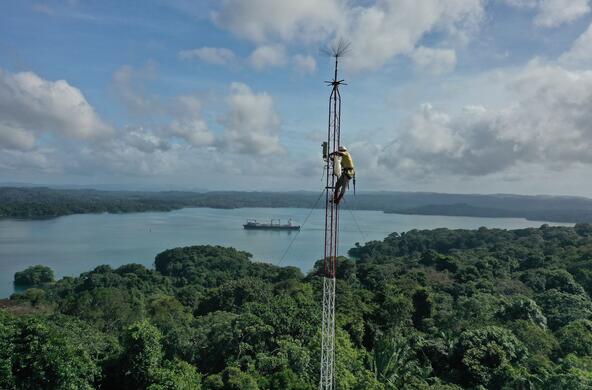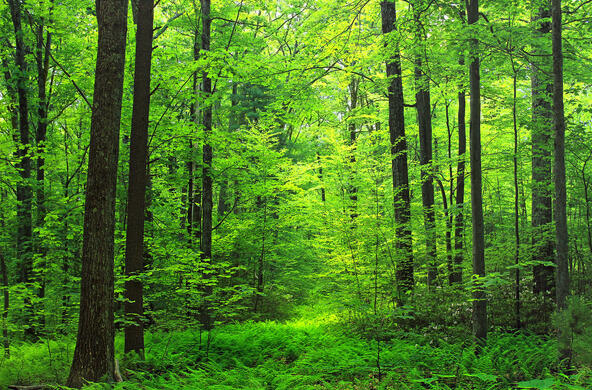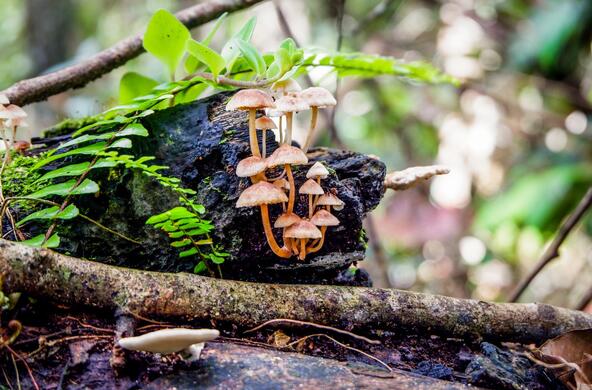Nothing vexes ambitious entrepreneurs more than to hear that if we move forth with their idea—a new mine in Alaska or a housing development in Georgia—an endangered species is likely to go extinct. I like the rich diversity of species that grace both our planet and the pages of the field guides for plants, birds and butterflies. And there are some ethics to species preservation, stemming from the argument that preservation of species was part of God’s instructions for man to be stewards of nature.
But, suppose we strip the question down to its bare bones: is there evidence that species make a difference? We lost the Passenger Pigeon and (for the most part) American Chestnut, and life seemed to go on pretty well without them. The Blue Tuna is close to extinct, to the distress of a few connoisseurs of raw sushi. And a small rodent on the Great Barrier Reef of Australia, the Bramble Cay Melomys, may have been the first mammal to disappear from climate change. Do these species matter?
An increasing body of scientific work suggests that a diverse world—what biologists call high biodiversity—is a healthier world. Working at the Cary Institute in Millbrook, NY, Rick Ostfeld has shown that the prevalence of Lyme disease and other tick-borne illness is more widespread in areas where the natural diversity of birds and mammals has been reduced by suburbanization. We should expect the same for the prevalence of the Zika virus, carried by mosquitoes.
In field experiments, where ecologists have excluded the presence of birds in the forest canopy, the level of insect herbivory increases markedly, reducing the growth of trees. Foresters should take note: a diverse forest is likely to have a high diversity of birds compared to a plantation forest of a single species. Other experiments in grasslands have shown that the more diverse the field, the greater resistance the grassland shows to periodic droughts and other perturbations that it may face.
Studies of agricultural systems in Costa Rica showed lower crop losses when a high diversity of birds is maintained near the borders of fields. This effect was estimated to save $75 to $310 per hectare per year for farmers in Costa Rica. Diverse systems are also less likely to “leak” nitrogen from fertilizer, where it may pollute surface runoff and groundwater.
A few decades ago, Paul Ehrlich and his colleagues described the importance of biodiversity with an analogy to the rivets on an airplane wing. Certainly, aircraft manufacturers use more rivets than necessary to hold on the wing—or at least I like to think so. So when you start removing rivets, the first few that disappear would probably make little difference. But, at some point when a critical remaining rivet is lost, a crash is inevitable.
We don’t know where we are along the path of declining biodiversity, except that the current rate of loss is well in excess of what is seen in the geological record. We know that humans have driven some species extinct, and it is likely that 10 billion humans will lead to more extinctions. By one reckoning, a loss of 20% of the species puts an ecosystem at risk. One estimate suggests that 18 to 35% of extant species will go extinct because of climate change in this century. Even if we pick the lower boundary of this estimate, the chance of losing the critical rivet seems too great to take.
References
Barnosky, A.D., M. Matzke, S. Tomiya, G.O.U. Wogan, B. Swartz, T.B. Quental, C. Marshall, J.L. McGuire, E.L. Lindsey, K.C. Maguire, B. Mersey and E.A. Ferer. 2011. Has the Earth’s sixth mass extinction already arrived? Nature 471: 51-57.
Ehrlich, P. and A. Ehrlich. 1981. Extinction: The Causes and Consequences of the Disappearance of Species. Random House, New York
Isbell, F. and 36 others. 2015. Biodiversity increases the resistance of ecosystem productivity to climate extremes. Nature 526: 574-577.
Karp, D.S., C.D. Mendenhall, R.F. Sandi, N. Chaumont, P.R. Ehrlich, E.A. Hadly and G.C. Daily. 2013. Forest bolsters bird abundance, pest control and coffee yield. Ecology Letters 16: 1339-1347.
Keesing, F., L.K. Belden, P. Daszak, A. Dobson, C.D. Harvell, R.D. Holt, P. Hudson, A. Jolles, K.E. Jones, C.E. Mitchell, S.S. Myers, T. Bogich and R.S. Ostfeld. 2010. Impacts of biodiversity on the emergence and transmission of infectious diseases. Nature 468: 647-652.
Mantyla, E., T. Klemola, and T. Laaksonen. 2011. Birds help plants: a meta-analysis of top-down trophic cascades caused by avian predators. Oecologia 165: 143-151.
Newbold, T. and 22 others. 2016. Has land use pushed terrestrial biodiversity beyond the planetary boundary? A global assessment. Science 353: 288-291.
Thomas, C.D. and 18 others. 2004. Extinction risk from climate change. Nature 427: 145-148
Tilman, D., D. Wedin, and J. Knops. 1996. Productivity and sustainability influenced by biodiversity in grassland ecosystems. Nature 379: 718-720.








